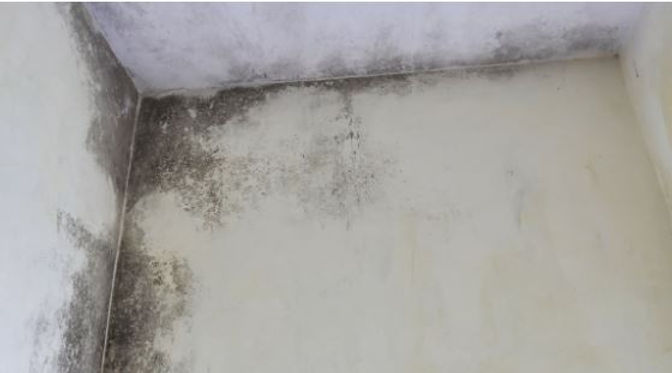In every home, maintaining the structural integrity of the foundation is paramount. A slab leak ranks significantly among the myriad issues that can compromise this integrity due to its potentially disastrous consequences. Often undetected until significant damage is done, these leaks, occurring in the water lines running below your concrete floor, can wreak havoc on your beloved home if left untreated.
Understanding what slab leaks are, their causes, signs, and how to address them in time not only saves on potential repair costs but also preserves your property's lifespan. This guide commences our journey of identifying and mitigating the detrimental effects of elusive slab leaks.

Understanding Slab Leaks
The foundation of most residential structures is a concrete slab, beneath which the essential plumbing system is situated. A slab leak refers to the troublesome scenario when these under-the-surface pipes experience a rupture or leakage.
This phenomenon can lead to water seeping underneath the concrete foundation, rapidly instigating noticeable harm. Slab leaks pose a significant risk to your home's structural integrity, damaging walls, floors, carpets, and drywalls. Even more worrying, it can progress undetected, silently causing considerable damage over time.
Causes of Slab Leaks
Knowing what provokes slab leaks arms you, as a homeowner, against such dire circumstances. Environmental triggers and building mishaps are key factors leading to these damaging leaks.
Pipe Corrosion
The pipes under your slab can deteriorate over time due to reactions with the soil or water. This corrosion weakens the integrity of your plumbing system, eventually leading to leaks.
Ground or Water Pressure
High pressure from water-logged grounds or earth movements can stress your pipes, catalyzing the development of cracks and consequent leaks.
Shoddy Construction Practices
If your home's plumbing system was improperly installed or used inferior materials, it's more likely to fail prematurely. Such construction oversights significantly contribute to slab leaks.
Friction from Pipes and Concrete
As water courses through your pipes, it induces vibration that generates friction between the pipes and concrete, causing potential erosion over time and resulting in leaks.

Signs of a Slab Leak
Recognizing the signs of a slab leak early can save you and your home from extensive damage. Stay vigilant for these indicators to protect your property's structural integrity and peace of mind.
Unusual Water Accumulation
If you notice strange pools of water in your home, especially on your floors, it might come from a slab leak. Left unchecked, this moisture can foster mold growth, harming your home's air quality.
Increased Water Bills
An escalated water bill should alert you to possible problems. Undiagnosed slab leaks can silently squander water, resulting in a noticeable surge in water consumption.
Sound of Running Water
It could signify a slab leak if you hear the sound of water flowing when none of your appliances are in use. Your attuned attention can help differentiate these noises from regular household sounds.
Hot Spots
Feeling certain areas of your floor unusually warm? That's a classic sign of a hot water line leak. These hot spots are often an indication that heated water is seeping into your foundation.
Low Water Pressure
When you experience a sudden dip in water pressure, it might not just be a municipal water issue. A slab leak could be diverting water away from your fixtures, impacting your daily routines.
Cracking Walls
Visible cracks snaking along your walls could be signaling that a slab leak is undermining your home's foundation and structure. These alarming signs warrant immediate attention to prevent further damage.
Floor Heaves
If parts of your flooring begin to buckle or heave, it's a significant indicator that water from a slab leak is accumulating underneath. This upward pressure can distort your home’s flooring, pointing towards urgent repair needs.
When to Call a Professional
In some situations, your keen eye and intuition aren't enough, and it's pivotal for you to call in a professional plumber. If the signs of a slab leak persist even after your initial DIY checks, such as inexplicable water bill hikes, warm floor spots, or sounds of running water when all faucets are off, it's time to seek professional help.
Remember, your home is one of your most important investments. A slab leak can cause extensive and costly damage if not addressed promptly. Professionals have the experience, tools, and knowledge to locate and repair slab leaks effectively without causing further harm to your property's foundation.
Methods Used by Professionals
Identifying a hidden slab leak is a complex task that requires specialized knowledge and high-tech tools to ensure a reliable and non-destructive process. Professionals use a few key techniques to accurately detect slab leaks.
Electronic Leak Detection
This method involves using sophisticated sound-based equipment. By picking up the sound frequencies produced by leaks, professionals can accurately locate the source of the leak without unnecessary disruption to your property.
Pressure Tests
Professionals may implement pressure tests, which involve isolating a section of your plumbing system and monitoring the water pressure. If the pressure drops, it indicates a leak within the isolated area.
Infrared Cameras
Professionals often employ infrared cameras to detect temperature variances in your plumbing system. These cameras can spot minute temperature changes, enabling plumbers to identify precisely where water might be escaping, or a pipe might be broken or blocked.

Temporary Measures Once a Leak is Detected
Discovering a slab leak can be alarming, but prompt interim actions can mitigate damage and simplify repairs until professional intervention is possible.
Turning off the main water supply is crucial when you suspect a slab leak. Locate your home’s main shut-off valve, usually near the water meter or where the water line enters the house. Turn this valve clockwise to halt water flow, thus preventing further leakage and damage.
%20(1).avif)


